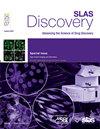Application of FRET- and BRET-based live-cell biosensors in deorphanization and ligand discovery studies on orphan G protein-coupled receptors
IF 2.7
4区 生物学
Q2 BIOCHEMICAL RESEARCH METHODS
引用次数: 0
Abstract
Bioluminescence- and fluorescence-based resonance energy transfer assays have gained considerable attention in pharmacological research as high-throughput scalable tools applicable to drug discovery. To this end, G protein-coupled receptors represent the biggest target class for marketed drugs, and among them, orphan G protein-coupled receptors have the biggest untapped therapeutic potential. In this review, the cases where biophysical methods, BRET and FRET, were employed for deorphanization and ligand discovery studies on orphan G protein-coupled receptors are listed and discussed.
基于 FRET 和 BRET 的活细胞生物传感器在孤儿 G 蛋白偶联受体去形态化和配体发现研究中的应用。
基于生物发光和荧光的共振能量转移检测法作为适用于药物发现的高通量可扩展工具,在药理学研究中获得了相当大的关注。为此,G 蛋白偶联受体代表了上市药物的最大靶标类别,其中孤儿 G 蛋白偶联受体具有最大的未开发治疗潜力。在这篇综述中,我们列举并讨论了生物物理方法 BRET 和 FRET 用于孤儿 G 蛋白偶联受体去形态化和配体发现研究的案例。
本文章由计算机程序翻译,如有差异,请以英文原文为准。
求助全文
约1分钟内获得全文
求助全文
来源期刊

SLAS Discovery
Chemistry-Analytical Chemistry
CiteScore
7.00
自引率
3.20%
发文量
58
审稿时长
39 days
期刊介绍:
Advancing Life Sciences R&D: SLAS Discovery reports how scientists develop and utilize novel technologies and/or approaches to provide and characterize chemical and biological tools to understand and treat human disease.
SLAS Discovery is a peer-reviewed journal that publishes scientific reports that enable and improve target validation, evaluate current drug discovery technologies, provide novel research tools, and incorporate research approaches that enhance depth of knowledge and drug discovery success.
SLAS Discovery emphasizes scientific and technical advances in target identification/validation (including chemical probes, RNA silencing, gene editing technologies); biomarker discovery; assay development; virtual, medium- or high-throughput screening (biochemical and biological, biophysical, phenotypic, toxicological, ADME); lead generation/optimization; chemical biology; and informatics (data analysis, image analysis, statistics, bio- and chemo-informatics). Review articles on target biology, new paradigms in drug discovery and advances in drug discovery technologies.
SLAS Discovery is of particular interest to those involved in analytical chemistry, applied microbiology, automation, biochemistry, bioengineering, biomedical optics, biotechnology, bioinformatics, cell biology, DNA science and technology, genetics, information technology, medicinal chemistry, molecular biology, natural products chemistry, organic chemistry, pharmacology, spectroscopy, and toxicology.
SLAS Discovery is a member of the Committee on Publication Ethics (COPE) and was published previously (1996-2016) as the Journal of Biomolecular Screening (JBS).
 求助内容:
求助内容: 应助结果提醒方式:
应助结果提醒方式:


